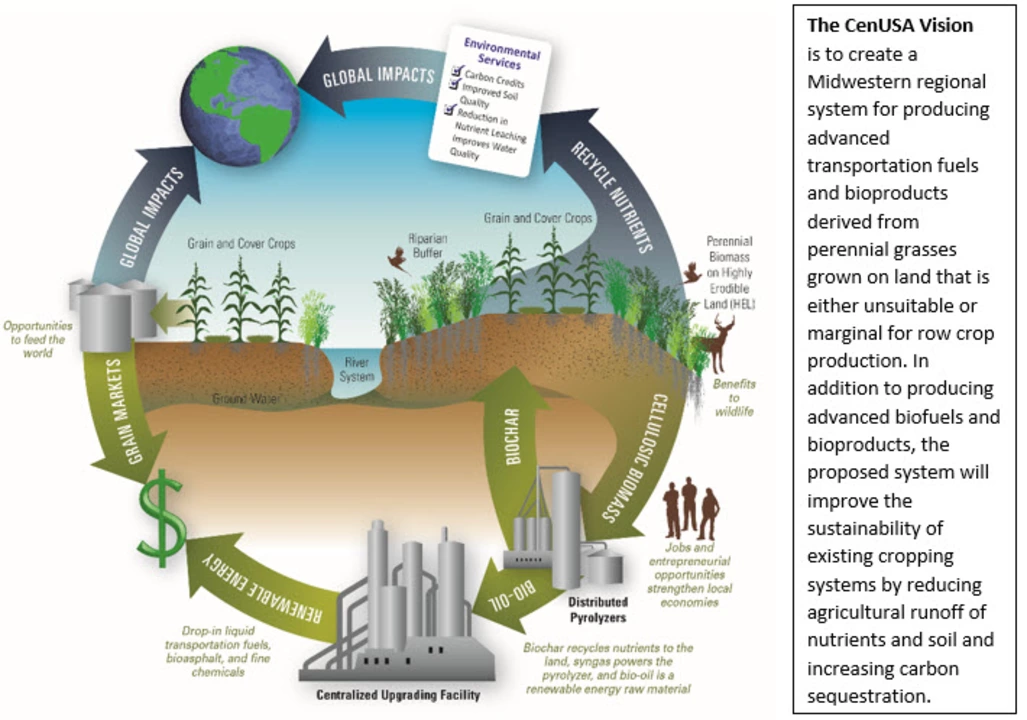What is the largest environmental impact of renewable energy?

Examining The Impact Of Renewable Energy On Climate Change
Climate change is one of the most pressing environmental issues of our time and renewable energy is seen as a major part of the solution. Renewable energy sources such as solar, wind, and hydroelectric power are increasingly being utilized to reduce the reliance on fossil fuels and reduce greenhouse gas emissions. But what is the largest environmental impact of renewable energy?
Environmental Benefits Of Renewable Energy
One of the major benefits of renewable energy is that it produces a significantly lower amount of greenhouse gas emissions. This is due to the fact that renewable energy sources such as solar and wind produce no emissions when generating electricity. In addition, renewable energy sources have much lower water requirements than traditional energy sources, which can help to conserve and protect water resources. Renewable energy can also help to reduce air pollution, since no fuel is consumed when generating electricity. Finally, renewable energy can help to reduce the strain on natural resources, since it does not require the extraction of coal, oil, and gas.
Environmental Drawbacks Of Renewable Energy
Although renewable energy has many environmental benefits, it does have some drawbacks. One of the biggest environmental impacts of renewable energy is land use. Solar and wind farms require vast areas of land to be used for energy production, which can have negative impacts on the local environment. In addition, the large-scale construction of solar and wind farms can cause disruption to local habitats. Finally, the materials used to construct renewable energy systems such as solar panels and wind turbines can contain hazardous chemicals, which can pose a risk to the environment if not disposed of properly.
Conclusion
Overall, renewable energy has many environmental benefits, but it also has some drawbacks. The largest environmental impact of renewable energy is land use, as solar and wind farms require large areas of land for energy production. In addition, the construction of renewable energy systems can cause disruption to local habitats and the materials used can contain hazardous chemicals. It is important to ensure that renewable energy is utilized in a responsible manner in order to ensure its environmental benefits are maximized and its environmental impacts are mitigated.
Exploring the Pros and Cons of Renewable Energy Sources
Renewable energy sources are becoming increasingly popular as a way to reduce our reliance on fossil fuels and reduce the environmental impacts of electricity generation. However, there is still some debate over the effectiveness of these sources and their potential environmental impacts. In this article, we will explore the pros and cons of renewable energy sources, and identify the largest environmental impact of renewable energy.
Advantages of Renewable Energy Sources
The most obvious benefit of renewable energy sources is that they are renewable, meaning that they don’t require the extraction of finite resources from the Earth. This eliminates the need to use non-renewable sources of energy such as fossil fuels, which can have a negative environmental impact. Renewable energy sources can also be more efficient and cost effective than traditional energy sources, which makes them a better option for businesses and households.
In addition, renewable energy sources are often more reliable than traditional sources, as they can be produced consistently throughout the year regardless of weather conditions. This is particularly beneficial in areas where traditional energy sources are unreliable due to frequent outages.
Disadvantages of Renewable Energy Sources
While renewable energy sources can offer many advantages, they also come with some drawbacks. One of the most significant issues is cost, as renewable energy sources are often more expensive to produce than traditional sources. This is especially true for large-scale projects, such as wind farms and solar installations, which require significant investments in infrastructure.
Another issue is that renewable energy sources are often intermittent, meaning that they are not always available when needed. This can make them unreliable, especially in areas where there isn’t enough sun or wind to produce the required amount of energy. Finally, some renewable energy sources, such as biomass, can have negative environmental impacts if not managed correctly.
What is the Largest Environmental Impact of Renewable Energy?
The largest environmental impact of renewable energy is the potential for land use change. Most renewable energy sources require large amounts of land to produce the necessary amount of energy, which can lead to deforestation and habitat destruction. This can have a negative impact on local wildlife and ecosystems, as well as the global climate. In addition, large-scale renewable energy projects can also disrupt local communities, as they can require the displacement of existing homes and businesses.
However, the environmental impacts of renewable energy can be minimized if the right steps are taken. For example, renewable energy projects can be planned carefully to minimize land use change and ensure that existing ecosystems are respected. In addition, renewable energy sources can be used in conjunction with other sources of energy to ensure that the overall environmental impact is minimized.
The Largest Environmental Impact of Renewable Energy: Land Use Change
Renewable energy is one of the most important steps we can take towards fighting climate change and reducing our reliance on fossil fuels. However, there are still environmental costs associated with its production. One of the largest environmental impacts of renewable energy is land use change, which can have a significant impact on biodiversity, local ecosystems, and the local climate.
Land use change occurs when land is cleared to make way for renewable energy infrastructure, such as wind turbines or solar panels. This process can cause significant disruption to local habitats, leading to the destruction of natural ecosystems and the displacement of local wildlife. Furthermore, it can lead to increased temperatures in the area, as well as increased water runoff, both of which can have a negative impact on local ecosystems.
In addition, land use change can cause soil erosion, which can reduce the fertility of the land and make it less productive. This can result in decreased crop yields, reduced water availability, and increased air pollution. All of these impacts can have a negative impact on local communities, as well as the environment.
Finally, land use change can lead to increased greenhouse gas emissions. When land is cleared for renewable energy infrastructure, it often releases carbon dioxide, methane, and other greenhouse gases into the atmosphere. This can contribute to global warming and climate change, which can have devastating consequences for the environment.
Overall, the largest environmental impact of renewable energy is land use change. This process can cause significant disruption to local habitats and ecosystems, as well as increased greenhouse gas emissions. It is important to be mindful of this impact when considering renewable energy as a viable option for reducing our reliance on fossil fuels.

Post-Comment